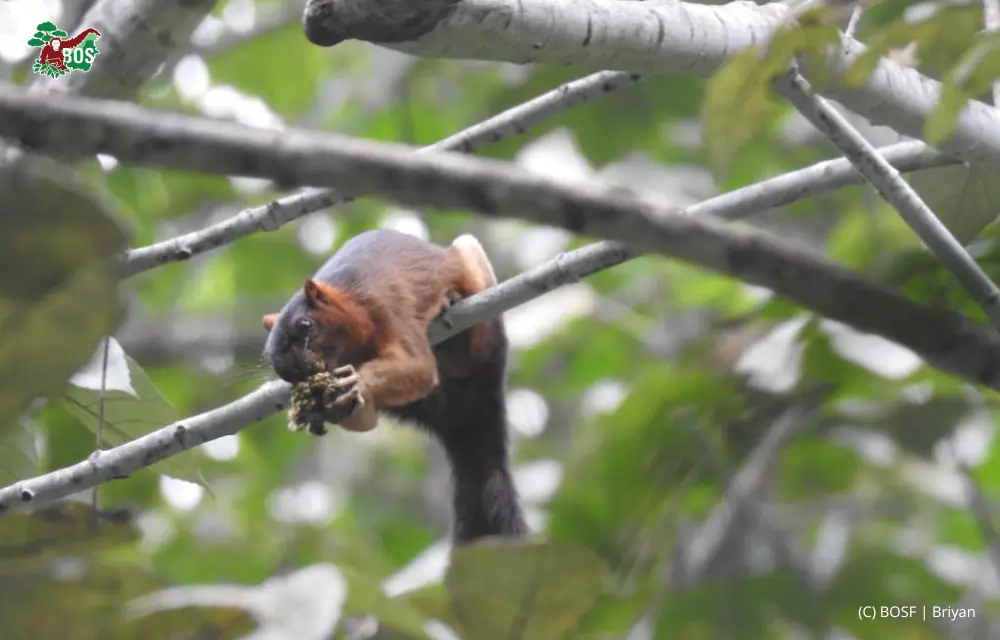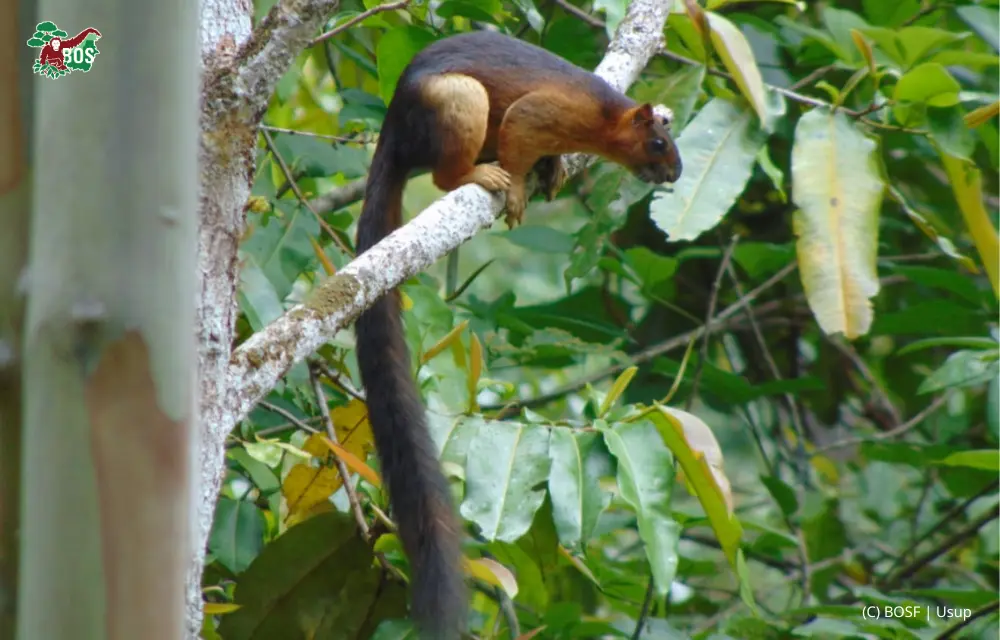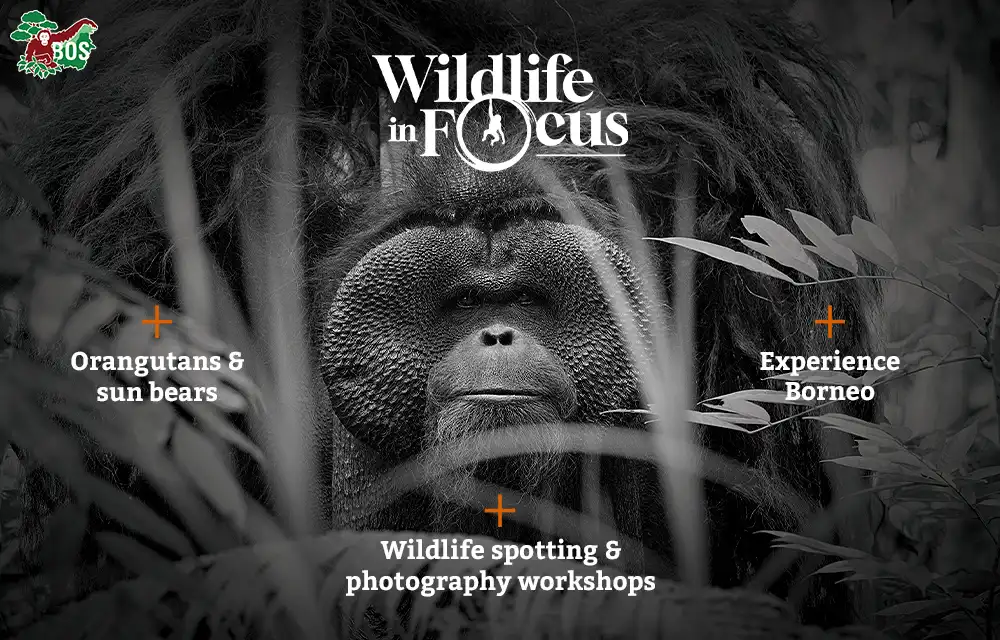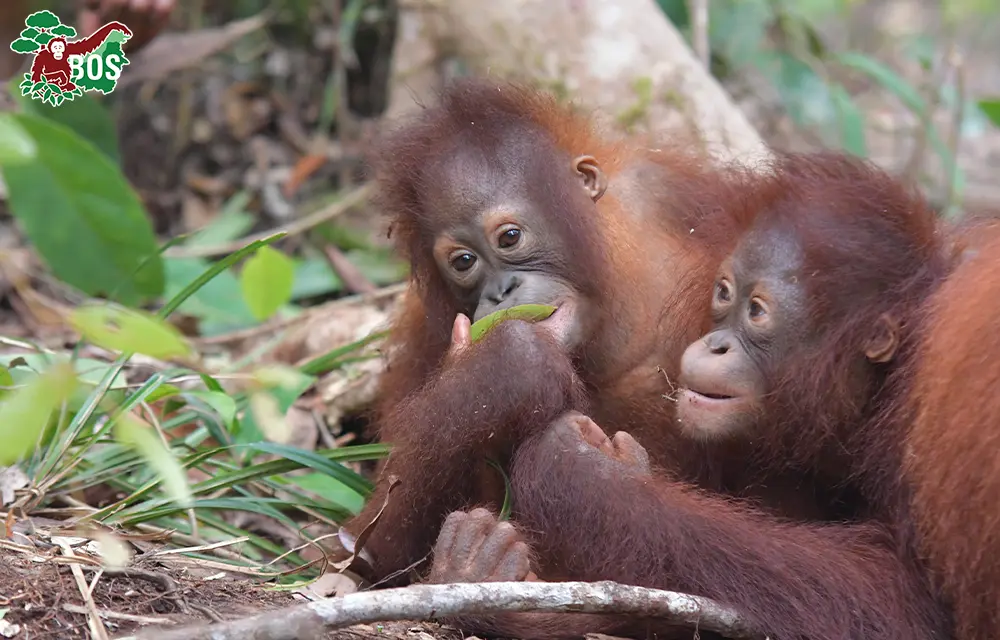As the Post-Release Monitoring (PRM) team members navigated the paths around the camp, they heard the rustling of twigs in a tree. When they got closer to the tree, they spotted a small mammal with a black tail and a golden brown body foraging in the canopy and preparing to jump. Guess what? It was Ratufa affinis, commonly known as jelarang bilalang or the pale giant squirrel.

Jelarang bilalang is a large squirrel that can weigh up to 1.5 kg. This species’ body can be up to 38 cm long, with another 44 cm of length in the tail alone! In Borneo, many of these squirrels have a whitish belly with a dark back and tail. This colouration makes the jelarang bilalang of Borneo quite unique as this is much darker than their counterparts in the Malay peninsula who are entirely pale in colour.
Despite its larger size compared to other squirrels, jelarang bilalang is a solitary mammal that prefers to be alone and avoid social interactions. They will only interact with other individuals during mating season. Apart from being solitary, jelarang bilalang is an arboreal mammal, spending all of its time in the treetops, running and leaping from branch to branch in search of food such as leaves, bark, fruit, seeds, and insects. However, they will visit lower parts of trees to avoid predators like eagles. This species is known as diurnal, meaning it is active only during the day, from dawn until dusk.
Jelarang bilalang live in the tropical rainforests of Southeast Asia in the countries of Brunei, Malaysia, and Indonesia (Borneo and Sumatra). Being an inhabitant of tropical rainforests, jelarang bilalang plays a crucial role in spreading seeds that contribute to forest regeneration.
Unfortunately, jelarang bilalang is listed as “Near Threatened” by the International Union for Conservation of Nature (IUCN) and categorised under Appendix II by Conservation on International Trade Endangered Species (CITES). The populations of these squirrels have decreased significantly due to hunting and habitat loss, and they will soon be at risk of extinction if these threats are not addressed.
At least in our release sites, we are pleased to see this species thriving and contributing to the ecosystem. We will continue to work together with our Restorasi Habitat Orangutan Indonesia (RHOI) teams to preserve these forests as homes for the jelarang bilalang and countless other species!
Text by: Hana Iffatalya, Japan Environmental Education Forum (JEFF) Program Internship Student Batch 6, Sompo Environmental Foundation
Will you help us rescue, rehabilitate and release orangutans back to freedom? Thank you!





